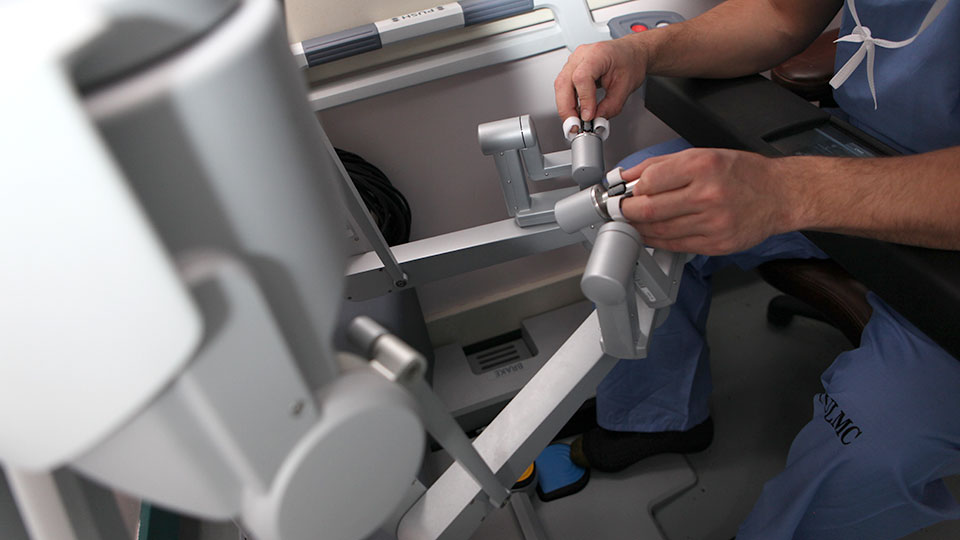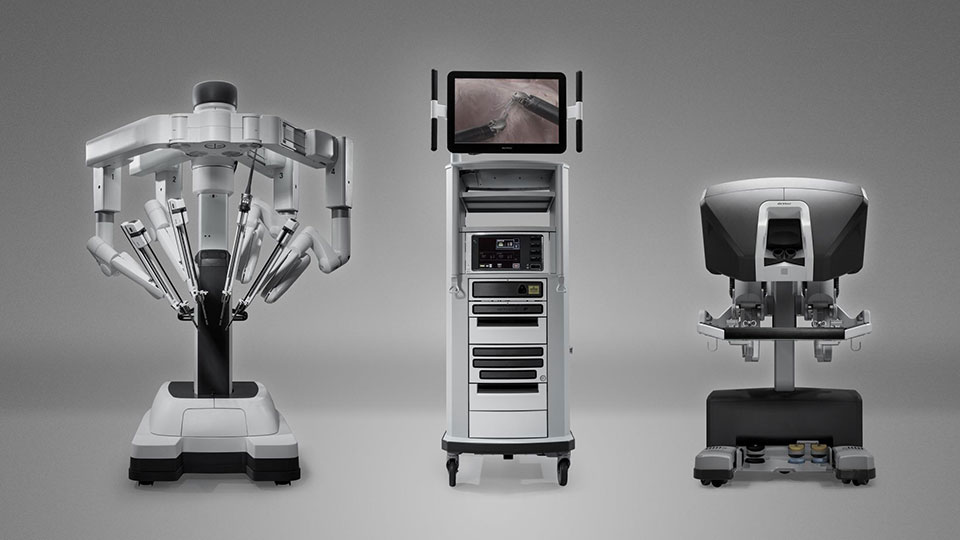What Is Robotic Surgery
Robotic surgery is a type of minimally invasive surgery during which doctors use very small surgical instruments that fit into a patient’s body through a series of tiny incisions.
These instruments are mounted on three robotic arms, allowing a surgeon maximum range and precision of motion as he or she performs the procedure. A fourth arm holds a high-definition, three-dimensional camera that enhances visualization—magnifying the tissue and structures of the body tenfold—and guides the surgeon during the procedure.

NYU Langone surgeons control their instruments and camera at a console in the operating room. Using finger and foot controls, they operate all four arms of the robot while looking through a stereoscopic, high-definition monitor.
The robot translates the surgeon’s hand, wrist, and finger movements to guide each instrument in real-time, after scaling each movement down to size. For example, a one-inch movement may be scaled down to a quarter-inch, allowing extraordinary surgical precision and operative control.
Potential Benefits of Robotic Surgery
Because robotic surgery requires very small incisions, appropriately selected patients can benefit from less surgical trauma, minimal scarring, and faster recovery times than with traditional open surgery.
Our surgical systems, the da Vinci® Si—and our latest surgical robot, the da Vinci® Xi—offer key features to improve the safety and effectiveness of robotic surgery procedures, including the following:
- the system’s two high-definition cameras provide the surgeon with a magnified view of the surgical site, combing very accurate depth perception with a 40 percent sharper image than previous systems
- an additional arm can be used to hold a retractor or other surgical instrument, giving the surgeon more operating capability
- instant image referencing lets the surgeon display diagnostic images, such as ultrasound or CT scan images of the area taken prior to surgery, on the da Vinci Si/Xi® monitor, alongside the surgeon’s view of the surgery being performed
- enhanced near-infrared imaging can be used during surgery to distinguish abnormal tissue from normal tissue and evaluate blood flow in real time
- extra mobile “wrist action,” with mechanical wrists that can hold an array of specialized surgical instruments and function like a human’s, but with an even greater range of motion
- scalability that allows the surgeon to calibrate the robot’s arm to move a fraction of an inch for every inch the surgeon’s hand moves, a feature that simplifies the most complex movements, including delicate removals as well as suturing and knot-tying
Our Robotic Technology
In 2008, NYU Langone became the first medical center in New York or New Jersey with the da Vinci® Si surgical robot, the world’s most advanced computer-assisted surgical system at the time. Since then, we have added six more systems to the Robotic Surgery Center and were the first New York City hospital with the latest generation robotic surgical system, the da Vinci® Xi.

This newest robot offers broader capabilities than prior generations of the da Vinci® surgical system and allows us to perform a wider range of minimally invasive procedures.